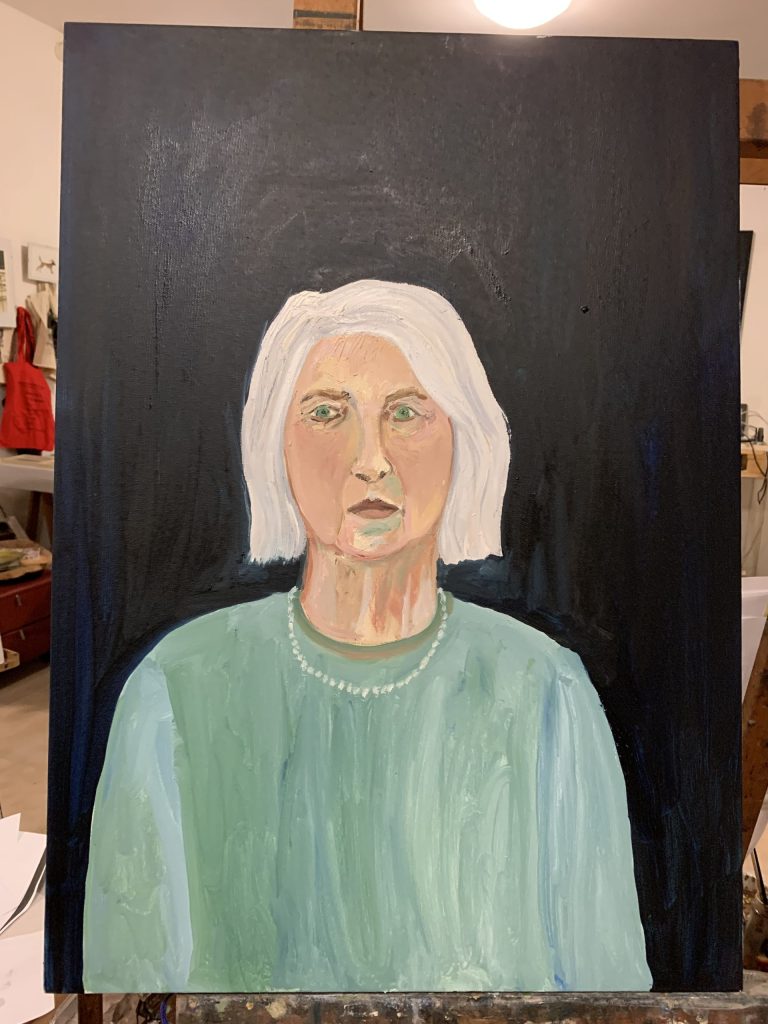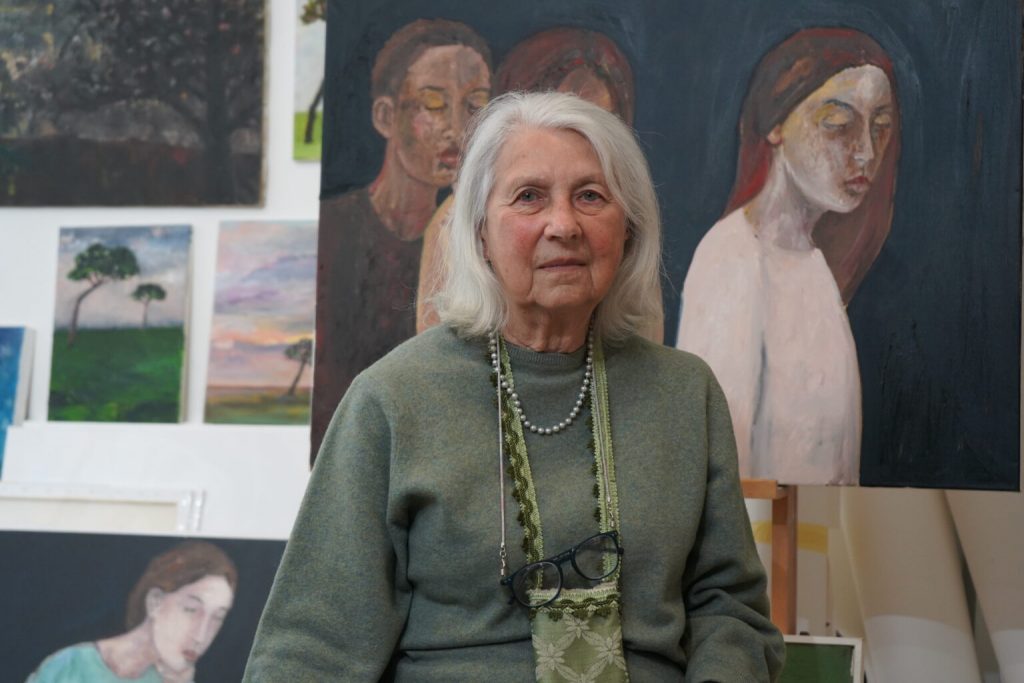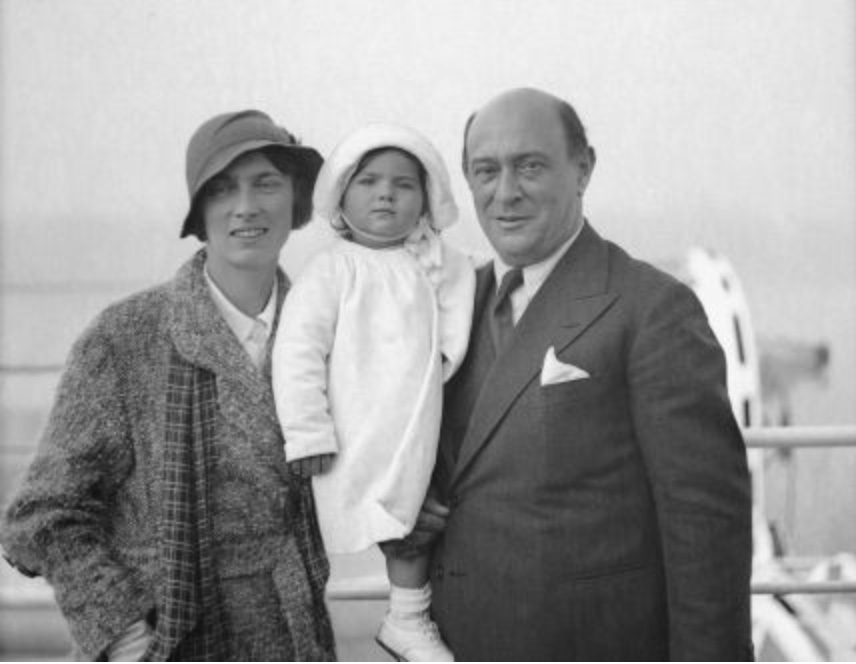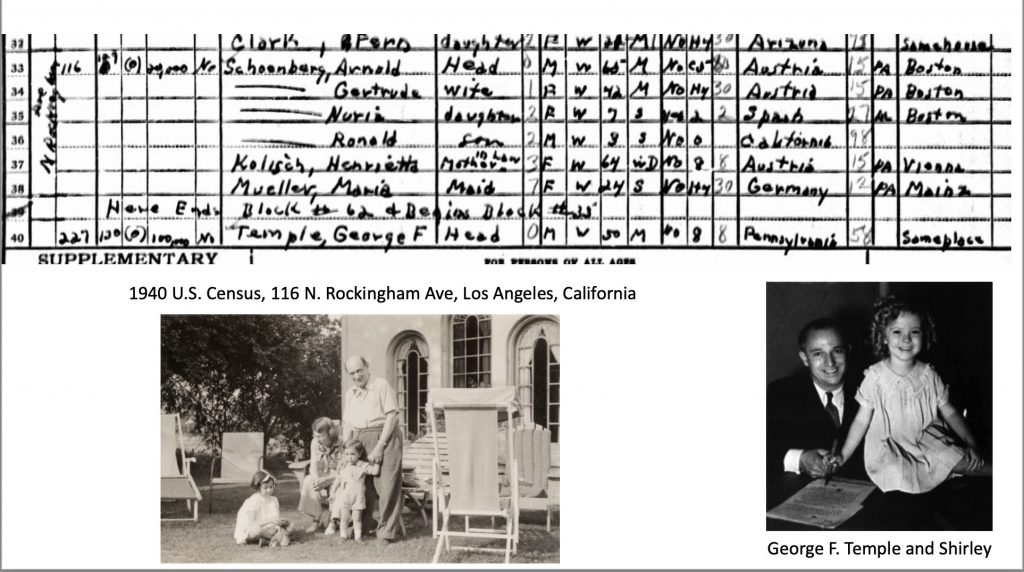Nuria Schoenberg Nono was born ay 7, 1932 in Barcelona, Spain to the composer Arnold Schoenberg and Gertrud Kolisch Schoenberg. The family fled from Berlin in May 1933 and arrived in the United States later that year. Nuria grew up in Los Angeles. In 1954 she travelled to Europe to attend the first performance of her father’s opera Moses und Aron in Hamburg, and met the Italian composer Luigi Nono (1924-1990). They married the following year in Nono’s home town of Venice, Italy, where she has lived ever since. Nuria is the author of a document biography of her father, Arnold Schönberg 1874–1951: Eine Lebensgeschichte in Begegnungen (1992), is the President of the Arnold Schönberg Center in Vienna, and is also the founder of the Archivio Luigi Nono on the Giudecca in Venice, where she works to preserve the legacy of her late husband.

Nuria has two daughter, Silvia and Serena. She has two brothers Ronald and Lawrence who both live in Los Angeles. Nuria and her brothers were raised Catholic, although their father had re-converted to Judaism. Their mother came from a converted family and was Catholic, but three of her four grandparents were born Jewish.
See a video on Nuria at https://www.youtube.com/watch?v=4AeHkq7cnjc.
https://www.geni.com/people/Nuria-Sch%C3%B6nberg-Nono/6000000002764344192
Nuria’s husband Luigi Nono, considered a leader of the musical avant-garde, was the most significant Italian composer of his generation. His compositions include Ricorda cosa ti hanno fatto in Auschwitz (1966) (Remember What They Did to You in Auschwitz), Fragmente – Stile, an Diotima (1980), Das atmende Klarsein (1983) (The Breathing Clarity), Prometeo (1985), and La Lontananza Nostalgica Utopica Futura (1988-1989) (The Nostalgic Utopian Future Distance). Many of his works deal with political themes. Nono was a supporter of the Italian Communist party, which made it difficult for his works to be performed in the United States. His compositions often use electronics or taped sounds. He was much influenced by the acoustic designs of the famous Venetian composer Giovanni Gabrieli (1554-1612) who positioned musicians in various locations inside St. Mark’s Basilica so that the church itself became an instrument. See this video at https://www.youtube.com/watch?v=Yg4GZw3vwao. Govanni’s uncle Andrea Gabrieli (1533-1585) is the first renowned member of the Venetian school of composers. Listen to his Psalmi Davidici (1583).


When Nuria was born May 7, 1932, she was named Dorothea Nuria after the patron saint of her birthplace of Barcelona, Spain, where her father was taking leave from his post at the Prussian Academy of Arts in Berlin to compose his opera Moses und Aron. Already at the time of Nuria’s birth the Schoenbergs were looking to leave Berlin and move to the United States to escape the escalating anti-Semitism in Germany.[1] They fled from Berlin to Paris by train on the evening of May 16-17, 1933, and after a summer in Arcachon, France, came to the United States, arriving in New York on the Ile de France on October 31, 1933. In America the spelling of the family name was changed from Schönberg to Schoenberg.
The family spent one winter on the East Coast, living in Brookline, Massachusetts and a summer in Chatauqua, New York, before moving to Hollywood in September, 1934. Nuria was just two years old, and she would spend the rest of her childhood in Southern California, most of it in the Brentwood home that the Schoenbergs moved to in 1936 and purchased in 1937, shortly before the birth of Nuria’s brother Rudolf Ronald (“Ronnie”) on May 26 of that year. Nuria’s youngest brother Lawrence (“Larry”) Adam was born on January 27, 1941. Nuria and her parents became naturalized U.S. citizens in April 1941.[2]
A typical meal in the Schoenberg home at that time is described by the young Schoenberg pupil Dika Newlin in her diary entry for October 15, 1940:
When the work was finally done, we went in to lunch: liverwurst, braunschweiger with pistachio nuts, avocado slices, lettuce with French dressing, raw apples and grapes, rye bread, and coffee; the whole flavored with a delightful atmosphere more pleasant to the palate than the most exotic spices. Old Mrs. Kolisch was at the table with us, and so was baby Ronnie, whose adorable prattle kept us in stitches all the time. Right in the middle of the meat course, what should he do but stand up on his chair and start pounding the table, yelling “We Want Woosevelt!” at the top of his voice! Such practices, Mrs. Schoenberg tells me, don’t meet with Nuria’s approval at all; she’ll wear a Willkie button on one side and a Roosevelt button on the other till after the election![3]
In Los Angeles, Nuria’s friends included Lotte Klemperer (daughter of the conductor Otto Klemperer) and Franzi Toch (daughter of the composer Ernst Toch). Franzi’s son Lawrence Weschler recounts an amusing story involving Nuria and his mother:
Franzi used to tell a story about how several years later, in the late 1940s, she and her close friend, Schoenberg’s daughter Nuria, went on a double date. In fact, this was to be the seventeen-year-old Nuria’s first such outing. When Franzi and the two escorts arrived at the front door of the Schoenberg manse on Rockingham, a tense but proper Schoenberg was there to present his daughter. Sternly, he inquired, “What time will Nuria be home?” “Well,” replied one of the young men, “let’s see, the opera downtown will end around eleven, and then there’s the ride back” – remember, this was in the days before the Santa Monica Freeway – “and we’ll probably go out for a snack—we should be back by about one-thirty.” “Oh,” frowned Schoenberg. “Do you have to go out for a snack? Couldn’t I give you a sardine sandwich to take along?” [4]
Nuria attended University Elementary School, Emerson Junior High School, Happy Valley School in Ojai, and University High School. In 1950 she matriculated at the University of California at Los Angeles, where her father had taught from 1936 to 1944. At this time Nuria also worked on the English translation of Gurrelieder and prepared the Speaker’s role under her father’s supervision. Her father died on July 13, 1951, when Nuria was 19 years old. Nuria was a pre-med major and received her Bachelor of Arts degree from UCLA in 1953.
In March 1954, Nuria traveled with her mother to Hamburg for the concert premiere of Moses und Aron, where she was introduced by her uncle Rudi Kolisch to her future husband Luigi (“Gigi”) Nono (b. 29 Jan 1924 Venice, d. 8 May 1990 Venice). Gigi had studied with Rudi at the Darmstadt Ferienkurse since 1950. In 1955, Nuria and Gigi were married in Venice, Italy, where Nuria has resided since that time.[5] Their daughter Silvia was born May 16, 1959, and daughter Serena Bastiana was born on November 14, 1964.
After the death of her mother on February 14, 1967, Nuria and her two brothers worked to preserve the estate of their parents, which was donated to the Arnold Schoenberg Institute at the University of Southern California in 1977 and moved to the Arnold Schönberg Center Privatstiftung in Vienna in 1997. After Gigi’s death on May 8, 1990, Nuria established the Archivio Luigi Nono in Venice in 1993. Nuria serves as president of the board of both the Arnold Schönberg Center Privatstiftung and the Achivio Luigi Nono. Her leadership has established these two archives at the forefront of the world’s musicological research facilities, with an emphasis on state of the art technology and open access.
Nuria has assisted with numerous exhibitions and publications concerning Schoenberg and Nono. In 1974 she helped set up the Arnold Schoenberg centenary exhibitions in Berlin and Vienna, and the first complete exhibition of Schoenberg’s paintings and drawings in 1991 in Vienna. Nuria has written numerous articles on Schoenberg, including one in conjunction with the publication of his playing cards by Piatnik. In 1992, Nuria published a large documentary biography of her father, Arnold Schoenberg 1874-1951: Lebensgeschichte in Begegnungen (Ritter: Klagenfurt 1992, paperback 1995). She is also the designer and producer of the traveling Schoenberg multimedia exhibition which has toured from 1996 to the present. In 1993, she edited the exhibition Luigi Nono 1924-1990 which has been shown in Salzburg, Lisbon, Reggio Emilia, Ferrara, Brussels, Rome, Schwaz and Stuttgart. She continues to be actively involved in numerous projects and publications concerning Schoenberg and Nono.
[1] Arnold Schoenberg Letters, Erwin Stein ed., p. 164 (Faber & Faber: London 1964). Letter to Dr. Joseph Asch in New York, May 24, 1932 “Will you make an attempt to get some rich Jews to provide for me so that I do not have to go back to Berlin among the swastika-swaggers and pogromists?” The family flew by airplane from Barcelona to Berlin on June 1, 1932, Nuria’s first flight.
[2] The family did not practice any organized religion until about 1944, when Ronnie began attending a Catholic school and all the children were sent to the local church (without their parents) regularly. Nuria’s confirmation name was Nuria Dorothea Maria Bernadette Schoenberg (names suggesting the influence of Alma Mahler, whose husband Franz Werfel had just written Das Lied von Bernadette). The family celebrated Christmas, with Schoenberg pupil Adolph Weiss often playing the role of Santa Claus.
[3] Dika Newlin, Schoenberg Remembered: Diaries and Recollections 1938-1976, p. 265(Pendragon Press: New York 1980).
[4] Lawrence Weschler, “Paradise: The Southern California Idyll of Hitler’s Cultural Exiles,” Exiles + Emigrés: the Flight of European Artists from Hitler, Stefanie Barron, ed., p. 344 (Los Angeles County Museum of Art: Los Angeles 1997).
[5] During this time, Nuria has also spent several years living in London and Los Angeles.


